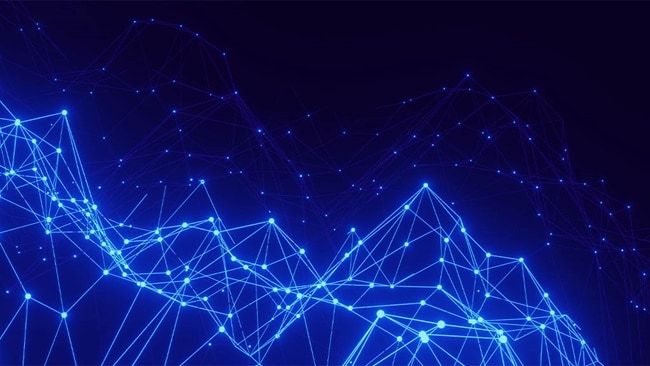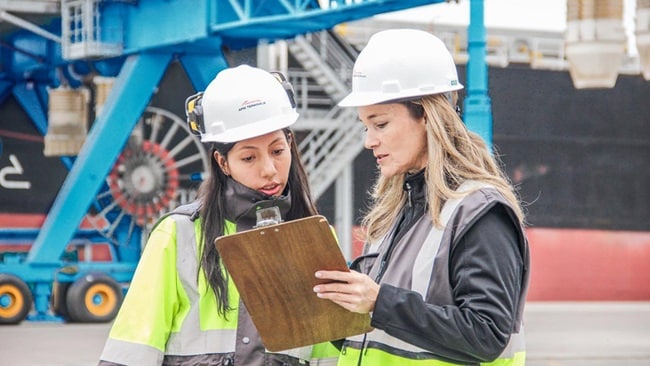The value of the global consumer electronics market is expected to surpass US$1tn by 2030.1 It is fast-paced and competitive, and it needs responsive supply chains that can get products to market quickly.
That is now truer than ever. Rapid innovation, complex global sourcing arrangements and demand for convenience are forcing businesses to continually innovate the consumer electronics supply chain.
In this context, we surveyed 75 supply chain and logistics leaders at consumer electronics businesses around the world as part of a larger survey of 500 executives in the technology sector. The findings reveal that the view of consumer electronics leaders about supply chain and logistics issues differs from those in other sectors in some key areas:

- A laser focus on costs: 53% of consumer electronics businesses say cost control is their top supply chain priority, which is more than in any other sector. They are less focused on improving supply chain resilience and security.
- Decarbonisation is a priority: Responding to customer concerns about climate change, 44% of consumer electronics businesses are prioritising the decarbonisation of supply chains, significantly more than the 34% doing so in other sectors. This could be difficult to balance with cost-cutting initiatives: 49% say decarbonising supply chain and logistics is too expensive.
- Lacking robust risk mitigation processes: Just 32% of consumer electronics businesses have a robust process for supply chain and logistics risk management and scenario analysis, compared with 40% in other sectors.
- Strategic partnerships are in high demand: 69% of consumer electronics businesses want their supply chain and logistics partners to do more to help them innovate and test new ideas – 16 percentage points above those in other sectors (53%). But today, the majority (56%) say their partners are solely focused on servicing their current needs rather than innovating for the future.
Supply chain and logistics can make or break a business
The 500 executives we surveyed from across the technology sector show there is a clear correlation between businesses in these sectors that have high-performing supply chains and better business performance.
For example, 77% of technology businesses with high-visibility supply chains (meaning that components and goods can be tracked as they travel through the supply chain with a high degree of accuracy) grew revenue in the past three years, compared with just 46% of businesses with low-visibility supply chains. Stronger supply chain visibility seems to mitigate unexpected disruptions, reduce costs and increase customer satisfaction – ultimately, it can improve business performance.
However, not every consumer electronics business acknowledges this. Only half (52%) say their supply chains and logistics is a source of competitive advantage or that a well-functioning supply chain and logistics helps deliver growth. In parallel, consumer electronics businesses’ top supply chain priority in the next 12 months is cutting costs–53% flag this as a top priority, a greater proportion than in any other sector. Other aspects of supply chain performance, such as reliability (only selected as a priority for 20%) and resilience (19%) are much less of a priority.
In time of high inflation and tightened consumer spending2, it is understandable that cost control is high on the agenda. But the danger is that supply chain performance, and therefore business performance, suffers if cost control is prioritised at the expense of improving other areas of the supply chain.

The climate crisis counts
Consumer electronics businesses are much more focused on supply chain decarbonisation than other technology sectors: 44% rank this as a top priority, compared with 34% outside this sector.
This reflects growing consumer awareness of climate change issues. Consumer electronics businesses sell direct to consumers, so feel pressure to act more acutely than businesses that typically sell to other businesses. Given that supply chains account for 60% of global greenhouse gas (GHG) emissions3, decarbonising is a key starting point in responding to consumer expectations.
Achieving their decarbonisation aspirations will not be easy: 55% say there are limited options to make their supply chain and logistics more sustainable and 49% say decarbonising supply chain and logistics is too expensive.
There are risks that threaten consumer electronics
The consumer electronics sector is no stranger to supply chain risk. For example, the global shortage of semiconductors – which are crucial to consumer electronics devices – that started in 2020 was estimated4 to have disrupted global GDP growth by 1% in 2021.
When asked about today’s greatest supply chain risks, rising geopolitical tension ranked first, followed by demand volatility. Consumer electronics businesses are also more concerned about exchange rate volatility than other tech sub-sectors. This could reflect the international nature of supply chains for consumer electronics businesses, which source components from all over the world.
To survive, organisations will have to carefully manage and mitigate these risks. But only 32% of consumer electronics businesses in our research say they have a robust process for supply chain and logistics risk management and scenario analysis, compared with 40% in other sectors. There is a clear need to invest the time needed to build up adequate risk identification and mitigation measures.

Collaborate to get a competitive edge
Establishing a collaborative relationship with their suppliers can help businesses to meet their strategic objectives. For example, many businesses want to reduce their GHG emissions. Given that 60% of these are generated in the supply chain, partners can help by suggesting lower GHG emitting transport options to reduce the footprint of key components.
It can also improve supply chain transparency and risk management. Suppliers are a lot more likely to alert customers early about potential delays, for example, if there is a close working relationship.
Unfortunately, many consumer electronics do not have strategic relationships with their suppliers today: over half (56%) also say their partners solely focus on servicing current needs.
According to our research, these businesses want more support from their external partners – particularly when it comes to the development of new products and services:
- 69% say they want their partners to do more to help them innovate and test new ideas – 16 percentage points above the global average (53%)
- 68% say that collaboration with partners will be a key source of supply chain innovation in the future, compared with 58% among other sectors overall
Through successful collaboration, supply chain partners can become more innovative and responsive to the needs of the global markets they serve. That will give consumer electronics businesses a competitive edge in volatile times.
For a deeper dive into the full research and actionable strategies, download the complete report - Be ready to build people-driven supply chains.

About FT Longitude
FT Longitude is a specialist thought leadership agency, owned by the Financial Times, working with a wide range of the world’s most prestigious B2B brands across Europe, the US and Asia-Pacific. FT Longitude’s 80+ clients are concentrated in the professional services, financial services, and technology sectors, but also stretch into energy, infrastructure, manufacturing and other industries. Headquartered in London, the company was founded in 2011 and was selected as one of Chief Marketer 200, Top Marketing Agencies of 2020, an Inc. 5000 Europe in 2018, an FT 1000 company in 2017, and a 2016 Leap 100 high growth UK company by City A.M. and Mishcon de Reya. It is led by founders Rob Mitchell (CEO), James Watson (COO) and Gareth Lofthouse (Chief Revenue Officer). For more information: visit longitude.ft.com.
How can you be ready for anything?
Instability is on the rise, causing logistics to feel the pressure of the constant disruptions. Is your business resilient enough? Do you know what it takes to build resilient supply chains in today's world?
Learn how Maersk can help with logistics resilience.
Sign up to The Logistics Pulse newsletter
You did it, welcome onboard!
We're sorry, but there was a problem sending your contact request.
Please review the form fields and ensure all required information is provided correctly. If the issue persists, please contact our support team for further assistance.
Sign up to The Logistics Pulse newsletter
Receive our insights directly in your mailbox by signing up through this form and enter a world of truly integrated logistics. Get inspired by our selection of articles that help you navigate supply chains, understand industry trends, and shape your logistics strategy. You can unsubscribe anytime.
I agree to receive logistics related news and marketing updates by email, phone, messaging services (e.g. WhatsApp) and other digital platforms, including but not limited to social media (e.g., LinkedIn) from A. P. Moller-Maersk and its affiliated companies (see latest company overview). I understand that I can opt out of such Maersk communications at any time by clicking the unsubscribe link. To see how we use your personal data, please read our Privacy Notification.
By completing this form, you confirm that you agree to the use of your personal data by Maersk as described in our Privacy Notification.













